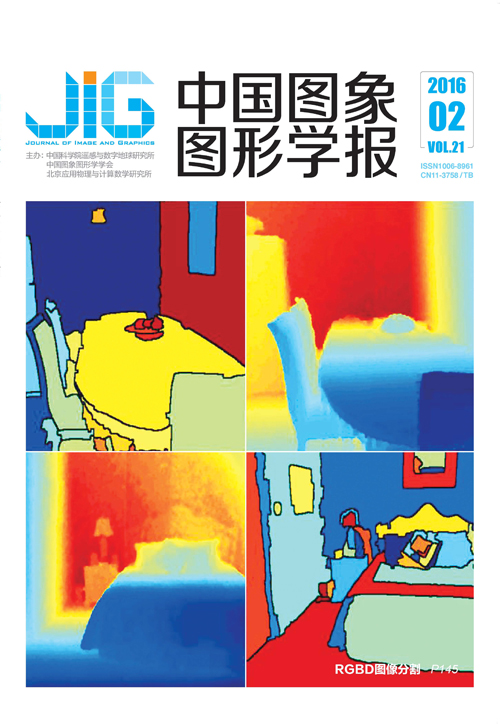
面向Kinect运动数据的鲁棒足迹检测
摘 要
目的 Kinect可实时获取运动数据且较传统的运动捕捉设备采集成本低廉,在运动数据捕捉方面得到了广泛应用。但Kinect获取的运动数据精度较低,现有运动数据处理算法难以适用。方法 针对运动数据处理的关键步骤足迹检测问题,提出面向Kinect运动数据的鲁棒足迹检测算法。首先使用自适应的双边滤波算法降低Kinect运动数据中的噪声;其次定义多种脚部运动特征并用于分类,优化分类效果;最后使用支持向量机(SVM)算法训练决策函数并用于足迹检测。结果 本文算法应用于多种类型运动数据后,可以有效地减少Kinect运动数据中的噪声,足迹检测的时间性能以及准确性良好,其中足迹检测的准确率比经典的基准线方法提高了10%左右,比K近邻方法提高了8%左右,检测一帧运动足迹的速度为K近邻方法的7倍左右。结论 对实验结果的分析证明算法具有良好的鲁棒性、时间性能以及准确率,可广泛应用于运动数据的处理之中。
关键词
Robust foot plant detection for Kinect-captured motion data
Luo Piao, Liu Xiaoping(School of Computer and Information, Hefei University of Technology, Hefei 230009, China) Abstract
Objective Kinect can be utilized to capture motion data in real time. Given that its cost is lower than that of traditional motion-capture devices, Kinect is widely used to capture motion data. However, the noise in Kinect-captured motion data makes the quality of motion data relatively unsatisfactory. Thus, previous data-processing methods failed to handle such data well.Method Foot plant detection is a key procedure in motion editing; it detects whether the character's foot is on the ground. A robust foot plant detection algorithm for Kinect-captured motion data is proposed in this study. First, an adaptively bilateral filtering method is proposed to reduce the noise in Kinect-captured motion data. Second, multiple features of the motion data are defined and utilized to optimize the effect of foot plant detection. Finally, a decision function is trained with the support vector machine algorithm and applied to foot plant detection.Result After being applied to a dataset that consists of various types of motion, the noise in the Kinect-captured motion data was reduced effectively.The accuracy of foot plant detection increased by 6% after applying the proposed adaptively bilateral filtering method.Good time performance and high accuracy of foot plant detection were acquired as well. The foot plant detection accuracy of the proposed detection algorithm increased by 11% and 8% compared with that of the baseline method and the K nearest-neighbor method, respectively. The time consumed in the detection of the motion data of one frame is a seventh of that of the K nearest-neighbor method. Conclusion Experimental results proved the effectiveness and robustness of the proposed foot plant detection algorithm. Thus, this algorithm can be widely utilized in motion data processing.
Keywords
|



 中国图象图形学报 │ 京ICP备05080539号-4 │ 本系统由
中国图象图形学报 │ 京ICP备05080539号-4 │ 本系统由